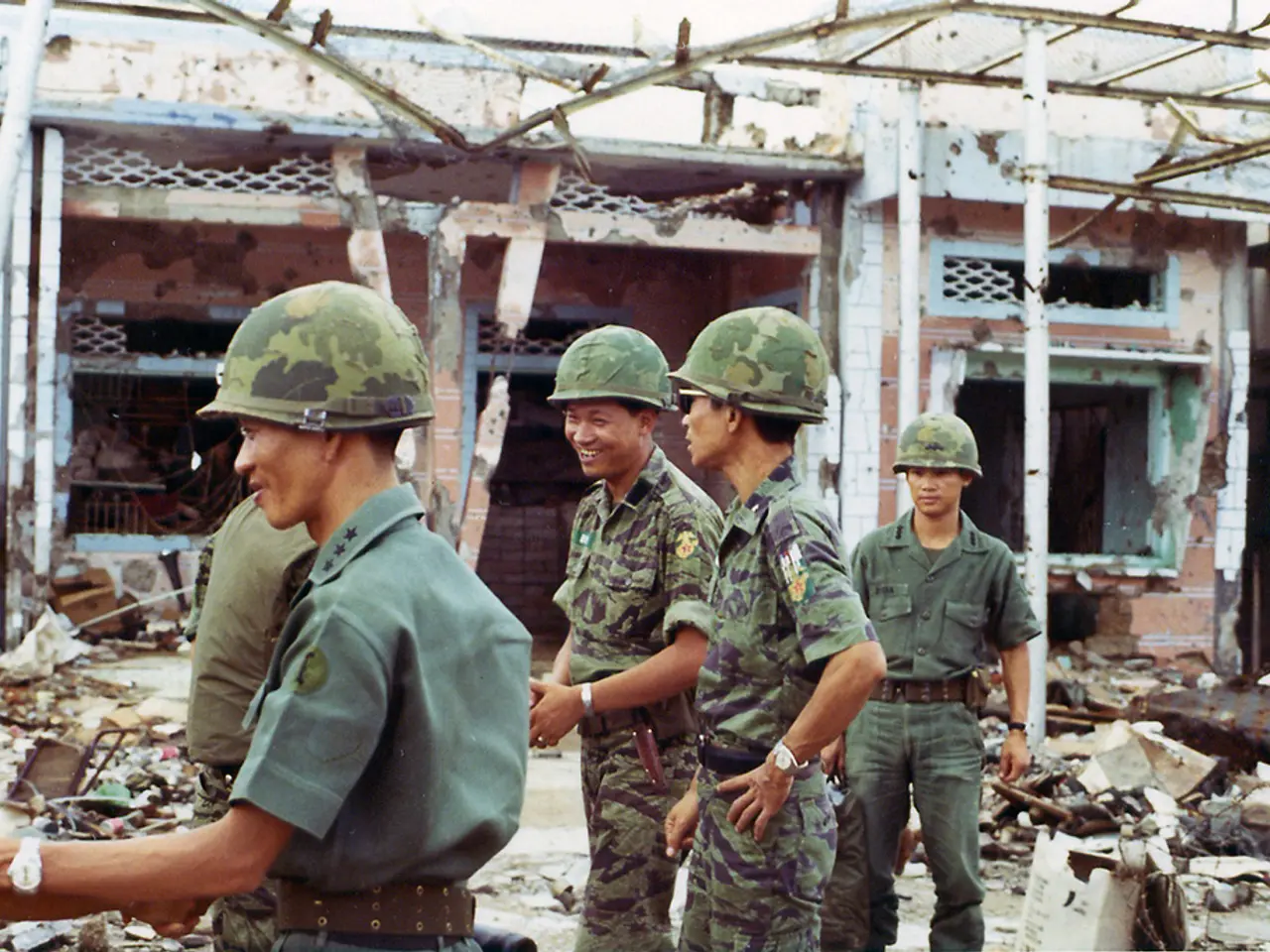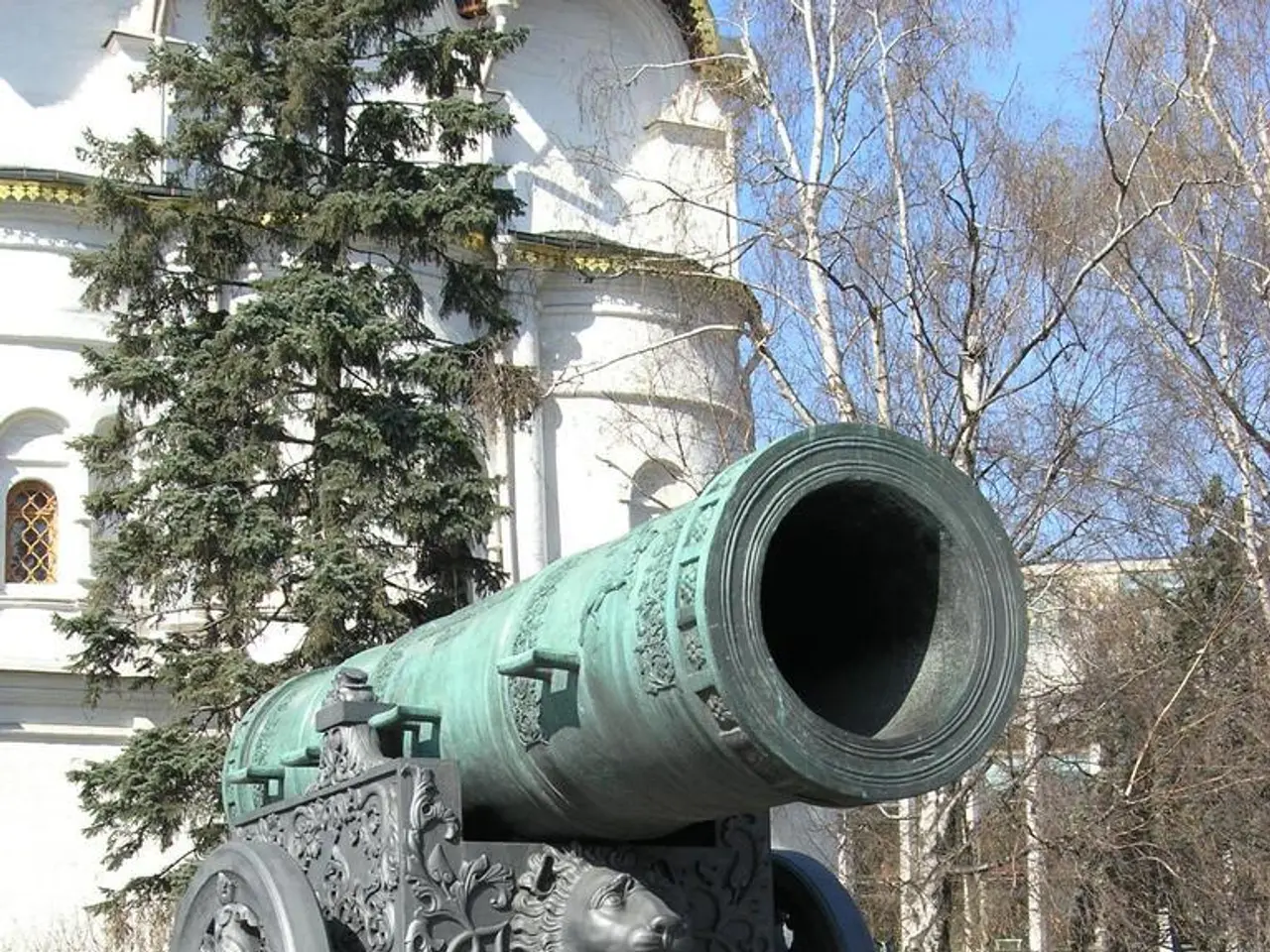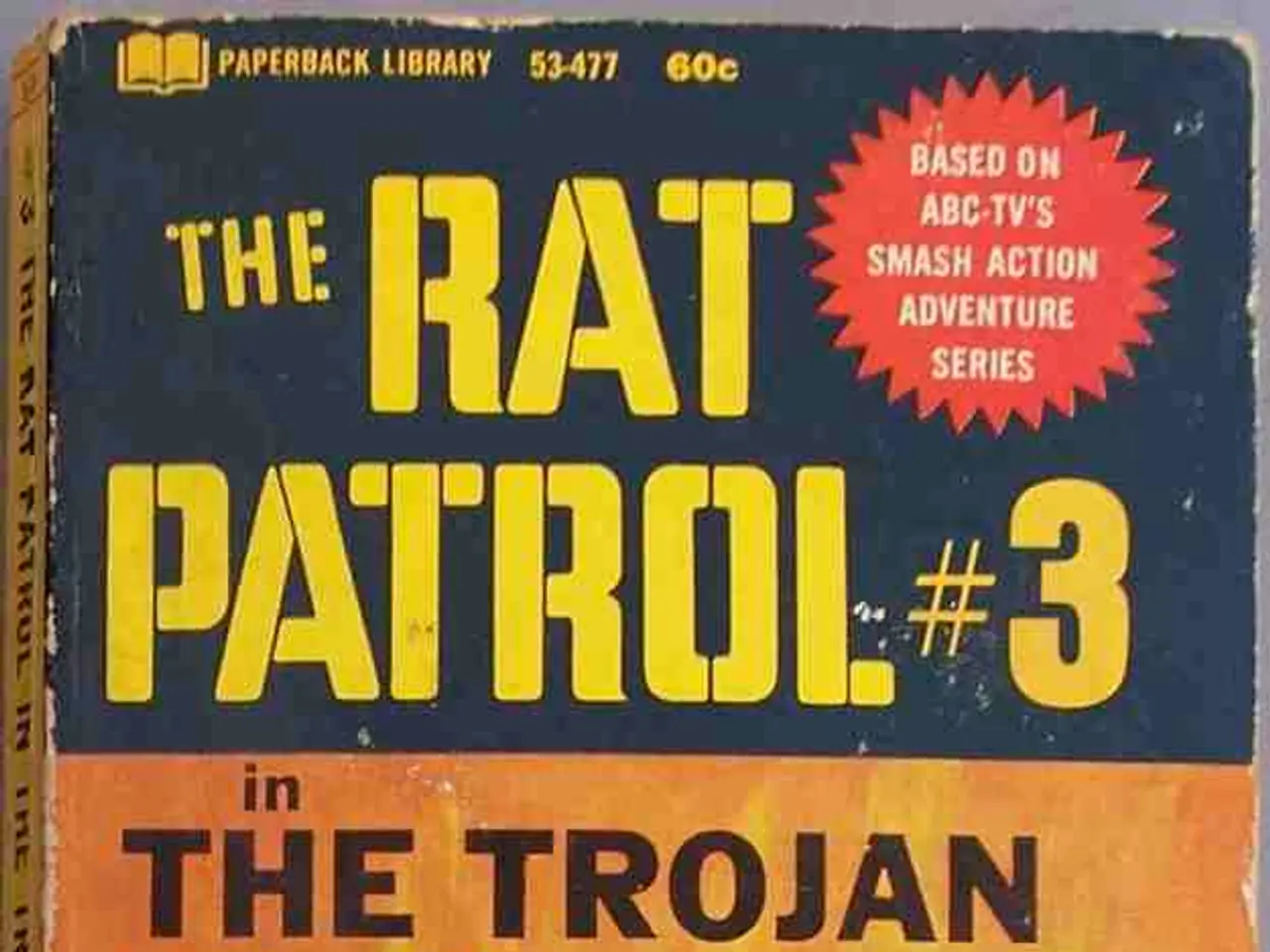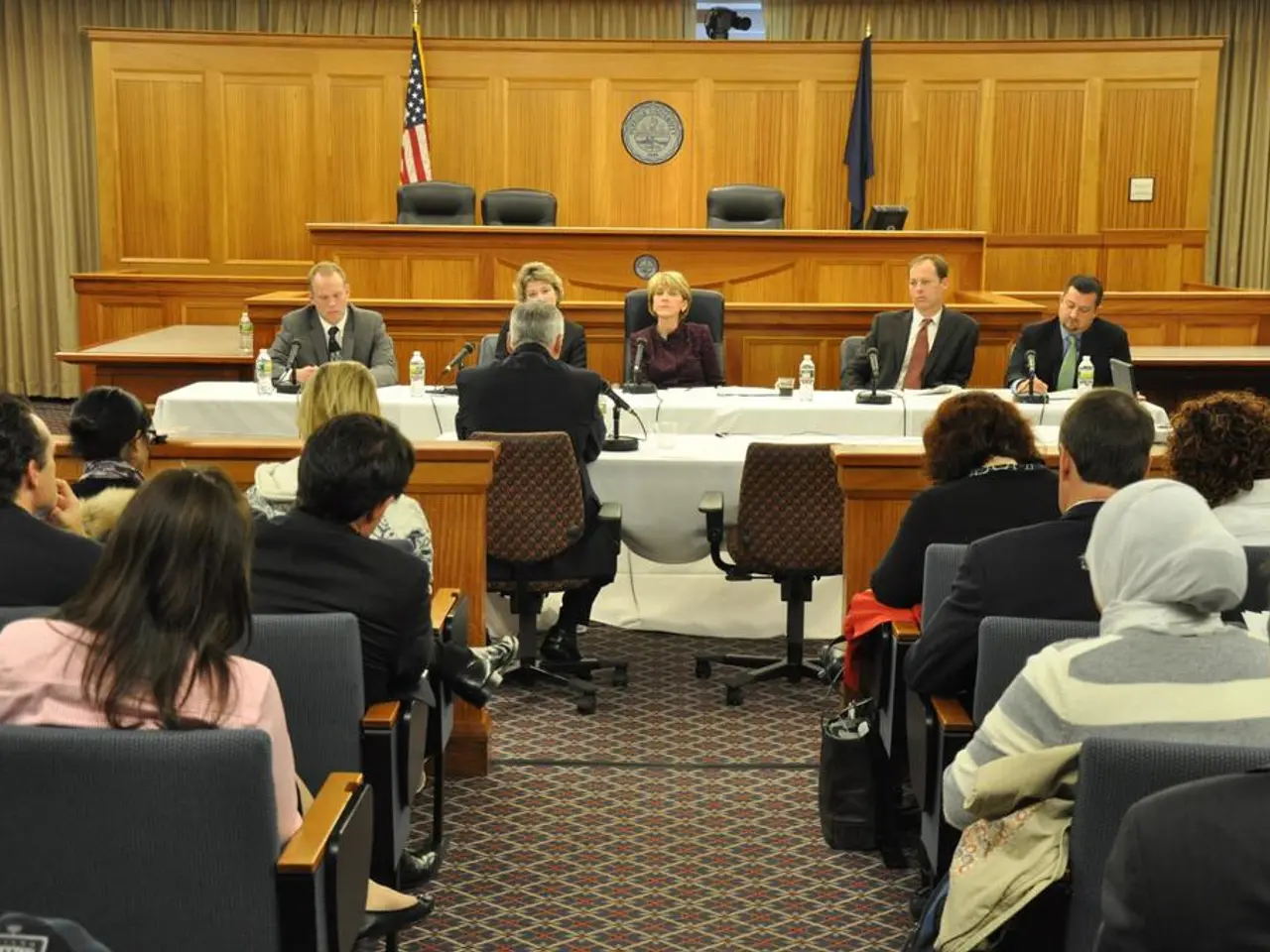Airstrike Witness Testimonies: Lahnstein During World War II Conflict
In the picturesque town of Lahnstein, Germany, the Hospital Chapel has transformed into a poignant memorial space for the exhibition "Bombs on Lahnstein: Impact of Aerial Warfare 80 Years Ago." This thought-provoking exhibition, open until 24 November, pays tribute to the approximately 500 soldiers who fell or went missing, and the 322 civilians who lost their lives on Lahnsteiner soil during World War II.
The exhibition is meticulously curated, featuring thematic sections that trace the events from the eve of World War II to the ground battles in March 1945, culminating in the American invasion. The exhibition juxtaposes global events of the war with those that unfolded in Lahnstein, offering a unique perspective on the impact of aerial warfare on a small town.
One of the exhibition's most compelling aspects is the inclusion of personal stories. Eyewitness accounts from survivors and residents of Lahnstein, such as Werner Valler, a former headmaster of the Schillerschule, and Rudi Kring, then a six-year-old boy who survived the 1944 air raids in the cellar of his parents' house in Gymnasialstraße, provide a human touch to the historical narrative.
The exhibition also showcases the story of a German Messerschmidt crash, which resulted in the pilot's death and burial in Oberlahnstein. Photographs of destroyed or war-damaged buildings, taken despite a photography ban during or after the war, serve as stark reminders of the destruction wreaked by the bombings.
Documents from the National Archives in Washington detailing orders for four of the total 13 air raids on Lahnstein and their subsequent evaluation, as well as propaganda from the National Socialists and leaflets from the Allies, dropped over Lahnstein, add depth to the exhibition.
The final focus of the exhibition is on the ground battles in March 1945 until the American invasion. On display is a sleeve of the prison uniform and diary of Hille Emmel, a Jewish woman who spent the last year of the war in the Ravensbrück concentration camp.
Mayor Lennart Siefert emphasises the importance of remembering the past, stating, "Peace is not a given, and the lessons of the past must never be forgotten." The city archive, which has relied on numerous donations from Lahnstein citizens for documentation purposes, has played a crucial role in the creation of this exhibition.
School class tours can be arranged directly with the city archive at [email protected] or 02621 914296, offering an educational opportunity for students to learn about this significant period in Lahnstein's history.
The exhibition "Bombs on Lahnstein: Impact of Aerial Warfare 80 Years Ago" is a poignant reminder of the devastating effects of war and the importance of peace. It serves as a testament to the resilience of the human spirit and the power of remembrance in preserving historical truths.
The exhibition's curation extends to political and general news sections, featuring National Archives documents detailing orders for air raids and propaganda from both the National Socialists and the Allies.
The juxtaposition of personal stories with global events offers a unique perspective on the impact of aerial warfare in politics, war-and-conflicts, and everyday life, as depicted in the heartwrenching tales of Lahnstein survivors.





